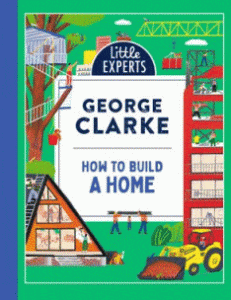
How to Build a Home
How to Build a Home
George Clarke
Robert Sae-Heng
Farshore, 2024
32pp., hbk., RRP $A19.99
9780008587895
At a time when some of our students are living in less-than-ideal conditions and the term “housing crisis” seems to be mentioned incessantly, houses and homes are receiving more attention than usual. And it’s not just the lifestyle programs with their innovative construction techniques and fancy interior design that are featuring – it’s the provision of one of the basic needs of human beings -shelter. And because it is a basic human requirement there are homes all around the world, each different from each other is shape, size, construction and materials, yet all providing for that same purpose.
In this new addition to the Little Experts series, architect George Clarke examines the who, what, and how of construction of a home in this modern time providing an introductory insight into the processes involved from design to the build to the completed product, demonstrating why it is a more complex task than it appears and why there is no magic wand to the problem of not enough for everyone. But there is hope as forward-thinkers explore new materials like the fibre from mushrooms or the seed pods of the cacao tree and even consider new technologies that might automatically adjust the room temperature by measuring body heat.
As well as the basic explanation of home building, readers are invited to “think like an architect” and redesign their own bedrooms, offering all sorts of scope to plan and design model homes using anything from old shoeboxes to Lego or letting the imagination go wild with dreams that may become reality. Why not have a toilet that analyses the products it collects for potential illnesses? Or a window that changes the ‘view’ to whatever will calm and relax the viewer at the time? In the past, and even now for some, the size of the home was a status symbol that announced the owner’s level of prosperity to the world and the power they wielded – in the past some countries introduced chimney and window taxes as revenue raisers – and today fewer and fewer young people envisage owning their own homes because of the cost. Perhaps, after reading this, our young people will consider the purpose of the home and there will be a shift in thinking to value more environmentally friendly dwellings that just do their job of providing shelter and something more than a tent in winter won’t just be a pipedream.
This is another in this excellent series which looks at the ordinary and discovers the extraordinary.
